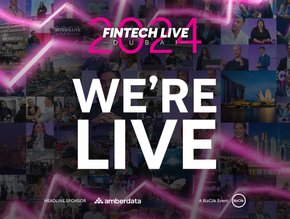How the pandemic will change banking in 2021

Over recent years, finance has become digitised. The rise of online banking, FinTechs and other phenomena has brought about an unparalleled age of convenience and accessibility for customers.
The events of 2020 have expedited this process. The pandemic has forced more and more customers to use digital channels. In the UK, the number of customers using mobile banking services on a monthly basis rose from 52% to 57% between H2 2019 and H1 2020. More widely, a similar increase was seen in the number of European banking customers using digital banking channels weekly (from 68% to 71% between 2019 and 2020).
This is true of both traditional banks and FinTechs. Across Europe, fintech apps have seen a 72% rise in usage since the beginning of the pandemic. Many traditional banks have found new ways to partner and interact with fintechs, from expediting loan application processes to adopting pay-by-bank features for customers shopping online.
With the socially-distanced reality of the pandemic set to last for some time, financial services can expect trends like integrated online banking and more regulations to continue. But what of other phenomena such as Phygital? Could it be that, as the pandemic recedes, physical banking - in some form or another – begins to creep back onto centre-stage?
Joined-up banking
The dependence of customers on the digital ecosystem in 2020 has made accessibility more important than ever. Open banking in the UK has meant account holders now expect far more integrated access to their accounts. The number of retail banking customers using open banking-enabled products double between January and September 2020, exceeding two million.
Yet open banking isn’t without challenges, especially with regards to customer perception. Much of this relates to trust and the unprecedented access given to third-party providers. A survey conducted by ING in October 2020 showed only 30% of respondents across Europe were comfortable with their bank sharing financial data with other companies, even if they had given prior consent for their bank to do so. Similarly, Ipsos MORI polling showed that while 75% of banking customers wanted access to data on how they spend their money, only 40% said they would be prepared to grant information to banks and TPPs to gain such insights.
Despite the uptake of open banking-enabled products in 2020, a more transparent approach will be needed to maintain customer trust and sustain its rise in 2021.
Accumulating cloud
As with open banking, the pandemic has accelerated cloud banking. While this is evident in data analysis and storage, the cloud serves an arguably even more important role in modernising core banking systems. Many traditional banks have been placed at a disadvantage during the pandemic, their ill-fortune likely to be exacerbated as the situation continues.
There are ways around this, however. The use of APIs and cloud-based microservices within system architectures can work wonders for flexibility and adaptability when faced with sudden, rapidly developing situations, like the pandemic. These permit faster, more accessible processes to be devised. For instance, one European bank moved its credit card approval process fully online, removing the need for customers to visit their local branch in order to obtain a new credit card.
Despite the temptation of changing priorities away from core banking modernisation, incorporating APIs and microservices into workflows presents benefits to both operations and customers – such changes likely outliving the current health crisis.
A Phygital future?
What will banks look like once the pandemic is history? There’s no question that convenient, integrated online services are here to stay. But might the lack of social contact caused by the pandemic mean physical banking makes some kind of comeback?
Phygital has been trending among banks for some time. Bank branches are no longer just banks; they’re cafes, workspaces, car dealerships and more besides. One major European bank has already made this jump to Phygital, opening a Work Café in Leeds, UK in 2019 where guests can check-in digitally and take advantage of an on-site barista. Similarly, a UK-based bank has opened 25 shared-work, mentoring and networking spaces across the country, targeted particularly at start-ups.
While the pandemic means these Phygital spaces are closed for the time being, a post-Covid world is sure to make these multifaceted environments more popular than ever.
All change
The impact of Covid-19 on financial services cannot be overstated. But the effect it’s had on banks and FinTechs has mostly expedited a journey they were already on –towards fast, convenient, integrated banking solutions for customers.
But many banks and FinTechs won’t have the resources to take this journey alone. Check out how Critical Software could help you navigate a post-Covid future by reading our white papers on Phygital and tackling the cyber security risks of digital transformation.






